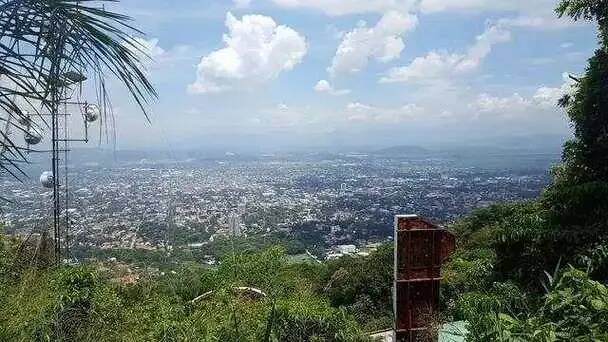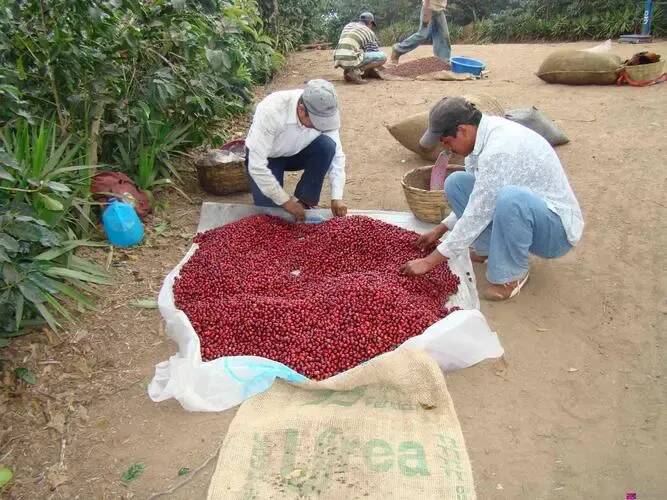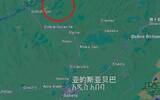Introduction to Gongma Agua, a coffee producing area in Honduras, Central America
The Central American region is dominated by plateaus, mountains and forests, and has a volcanic belt more than 1300 kilometers long. Due to the accumulation of volcanic ash, fertile soil and diverse climate here, many countries in Central America are famous for producing coffee, such as Honduras, Costa Rica and Panama. Among them, Honduras has become the second largest coffee exporter in Central America and the tenth largest coffee exporter in the world.

According to historical records, coffee was first introduced to Honduras by Spanish merchants in the late 18th century and planted on a small scale, but coffee cultivation is a long-term investment that most farmers cannot wait. so it still depends on other crops to support the economy. After several years of precipitation, it has gone through the initial stage.
In 1970, the Honduran Coffee Association (IHCAFE) was officially established to improve the quality of coffee, with six large producing areas designated within the organization. However, because several neighboring countries are also coffee exporters, fierce competition and poor traffic conditions in Honduras, coffee is basically produced and sold on its own. It was not until 2001, when the construction of transportation in Honduras was improved, and coffee production began to increase significantly, that coffee bean exports slowly banned the economic status of other crops.

More than 3/4 of the country in Honduras are mountains and plateaus, with mountains extending from west to east, inland lava plateaus, intermountain valleys, and coastal areas as plains, with forests accounting for about half of the country's area. Honduras has a tropical climate and the coastal plains have a tropical rain forest climate, with an annual average temperature of 23 ℃. Honduras is rich in natural resources, with high-altitude mountains, volcanic soil and a variety of climate, which make the country very suitable for growing crops such as coffee.
The Honduran Coffee Institute (IHCAFE) has designated six large producing areas, namely, copan, opalaca, montecilos, Gongma Agua conayagua, Akata agalta tropical and Paraso el paraiso.
Among them, Gongma Agua District (Conayagua) has a good performance in recent years. The area is located in the central and western part of the country, between the Comayagua region of Comayagua province and the Francisco Moraz á n region of Francisco-Morasan province.
Most of the here are pine grasslands, high mountains, swamps and tropical rain forests, with an average elevation of 1100-1700 meters and an annual precipitation of 1350-1700 mm, providing a high-quality growing environment for coffee. The area is dominated by lemon flavor, obviously sweet fruit aromas, taste as mellow as cream, but also with citrus sweetness, and exudes sweetness and chocolate.
In this year's COE in Honduras, El Gravileo Farm from the Gongma Agua region stood out. Although it only finished 18th, it scored 88.07and was the only winner in the region. The farmer of El Gravileo Farm is Lester Marquez, which at first had only a few oak trees, and later began to grow coffee and other crops. At first, the variety Parainem was planted, but this variety is more suitable for growing at low and middle elevations, while the estate is close to 1800 meters above sea level, and later changed to Typica.
After that, I met some international coffee buyers through some trading companies, who thought that the coffee quality of the manor was high, so they encouraged the landowners to participate in COE, and this year was the first time that the manor participated in COE and won the ranking. As a result, the landowner says the auction will get more money to invest in the farm and help the coffee grown on the farm achieve higher quality in the next few years.
Important Notice :
前街咖啡 FrontStreet Coffee has moved to new addredd:
FrontStreet Coffee Address: 315,Donghua East Road,GuangZhou
Tel:020 38364473
- Prev

Two trucks of smuggled weapons were exposed! Ethiopia is expected or blocked from Somali ports
According to local Ethiopian media reports on July 20, armed conflicts between Fano forces and government forces continue to be affected in the Darra district in the North Shewa Zone, not far from the capital of Ethiopia. According to reports,
- Next

This cup of special coffee is named Chaoshan Poison! Chaoshan netizens were not convinced when they saw it!
▲ Click to pay attention| Daily Boutique Coffee Culture Magazine Coffee Factory Driven by the tourism industry caused by the fire, Chaoshan cuisine has become well known to the public. Among them, the more well-known ones should be raw and pickled seafood with local characteristics. Wash and process freshly salvaged seafood, add soy sauce, pepper, onions, garlic and other ingredients for simple marinating, and you can
Related
- What effect does Italian American coffee with filter paper have? Will coffee taste better if it is put on filter paper at the bottom of the powder bowl?
- What is the color difference in coffee beans? What are the characteristics of honey processed coffee beans? Why are the anaerobically treated coffee beans uneven in color?
- How does novice Xiaobai quickly get started and make coffee? Newbies learn to make coffee by hand and share the specific steps and process process!
- Costa tea has a shelf life of 100 years?! Expert: Unable to verify
- It's a huge uproar! American milk addition was rejected by Manner employees?!
- Mocha pot coffee bean recommendations| How fine and how much powder should be used for grinding? What parameter ratios do I need to use to make milk with Mocha pot coffee?
- What are the characteristics of the world's top ten coffee beans treated with Costa Rica honey? How to make black honey kadura from Tarazhu Pilon Processing Plant taste good?
- How to make deep-roasted coffee? What grinding water temperature does authentic Jamaica Blue Mountain No. 1 coffee use to brew it well?
- Selected high-grade rose summer coffee flavor tasting guide Why Panama rose summer has the aroma of flowers and fruits
- What equipment does a novice Xiaobai need to buy to learn to make coffee? Filter cup electronic scale bean grinder manual flushing pot purchase guide

